Whole food plant centered eating focuses on consuming foods from plants in their natural state. This way of eating includes fruits, vegetables, whole grains, legumes, nuts, and seeds. It cuts out or limits animal products and processed foods.
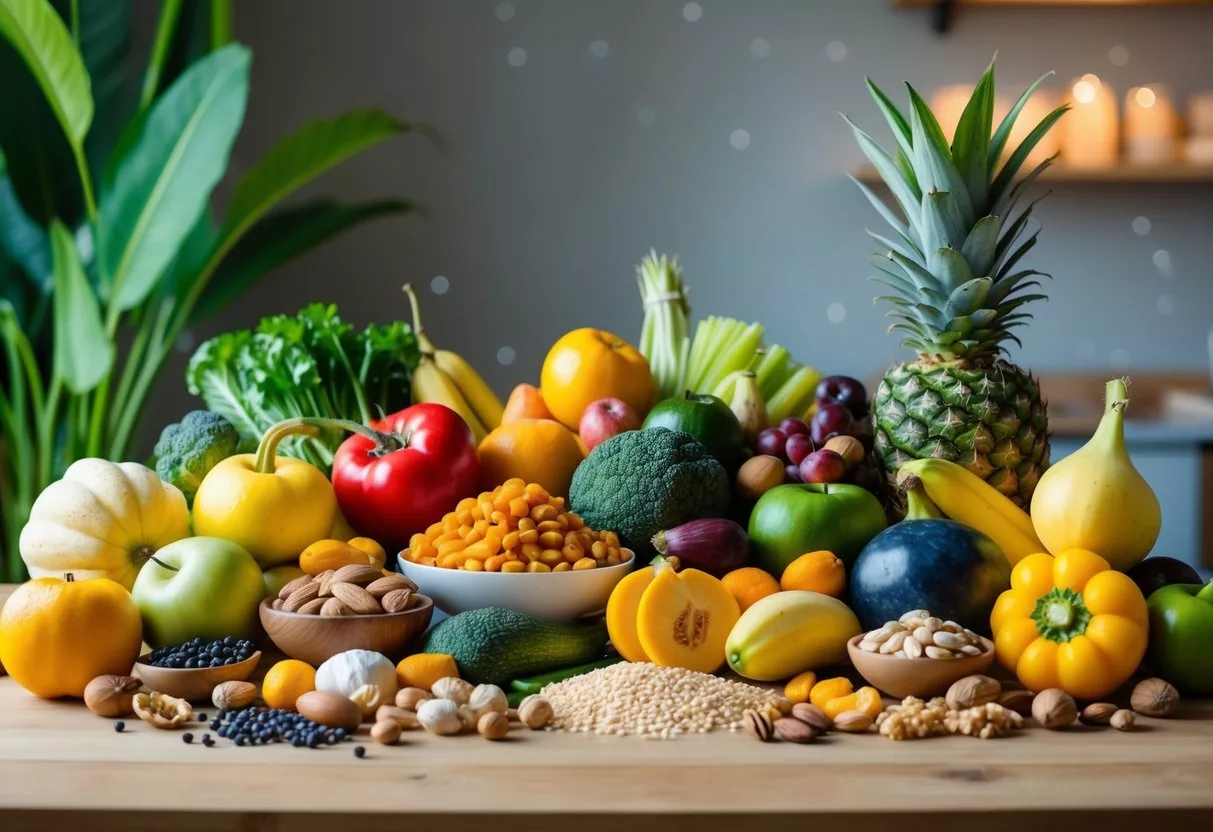
A plant centered diet can lower the risk of heart disease, diabetes, and some cancers. It provides fiber, vitamins, minerals, and antioxidants that support good health. Many people who switch to this eating style report feeling more energetic and losing excess weight.
Getting started with plant centered eating is simple. Fill your plate with colorful veggies, fruits, and whole grains. Add beans, lentils, or tofu for protein. Snack on nuts and seeds. Drink water instead of sugary drinks. Small changes can make a big difference in nutrition and health[1].
Fundamentals of Whole Food Plant-Centered Eating
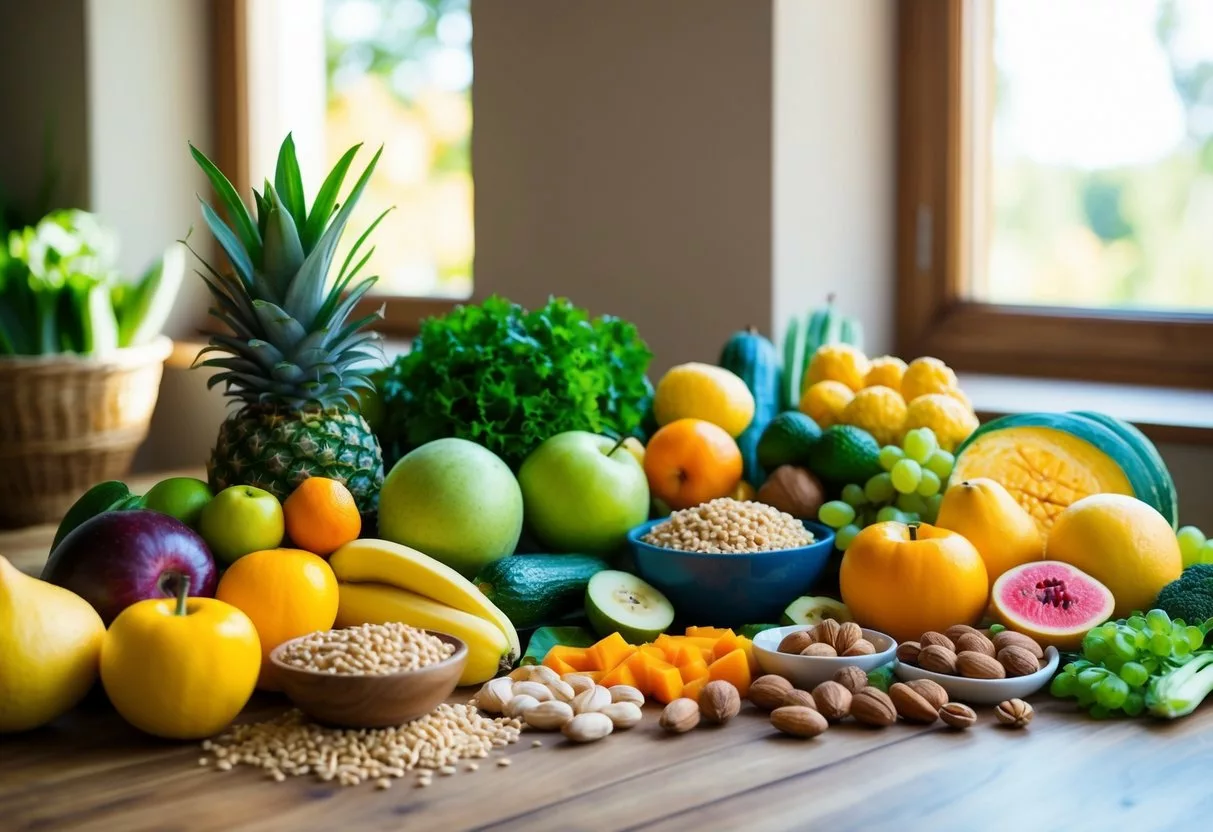
Whole food plant-centered eating focuses on natural, unprocessed plant foods. It emphasizes vegetables, fruits, whole grains, and legumes as the main parts of meals.
Defining a Plant-Based Diet
A plant-based diet[2] centers around foods that come from plants. These include:
- Vegetables
- Fruits
- Whole grains
- Legumes (beans, lentils, peas)
- Nuts and seeds
This way of eating limits or avoids animal products like meat, dairy, and eggs. It also cuts out processed foods.
Plant-based diets can range from flexible to strict. Some people eat mostly plants with small amounts of animal foods. Others follow a vegan diet with no animal products at all.
The key is to focus on whole plant foods in their natural form. This means choosing an apple over apple juice, or brown rice over white rice.
Benefits of Whole Foods Over Processed Foods
Whole foods offer more nutrition than processed options. They keep their natural fiber, vitamins, minerals, and plant compounds.
Whole plant foods[3] provide:
- More fiber for better digestion and gut health
- Higher nutrient content
- Lower calories per serving
- No added sugars, salt, or unhealthy fats
Processed foods often lose nutrients during manufacturing. They may have extra sugar, salt, and fats added. This can lead to health issues when eaten often.
Whole foods help people feel full longer. The fiber and water content takes up more space in the stomach. This can help with weight control and blood sugar balance.
Nutritional Components of Plant-Centered Diets
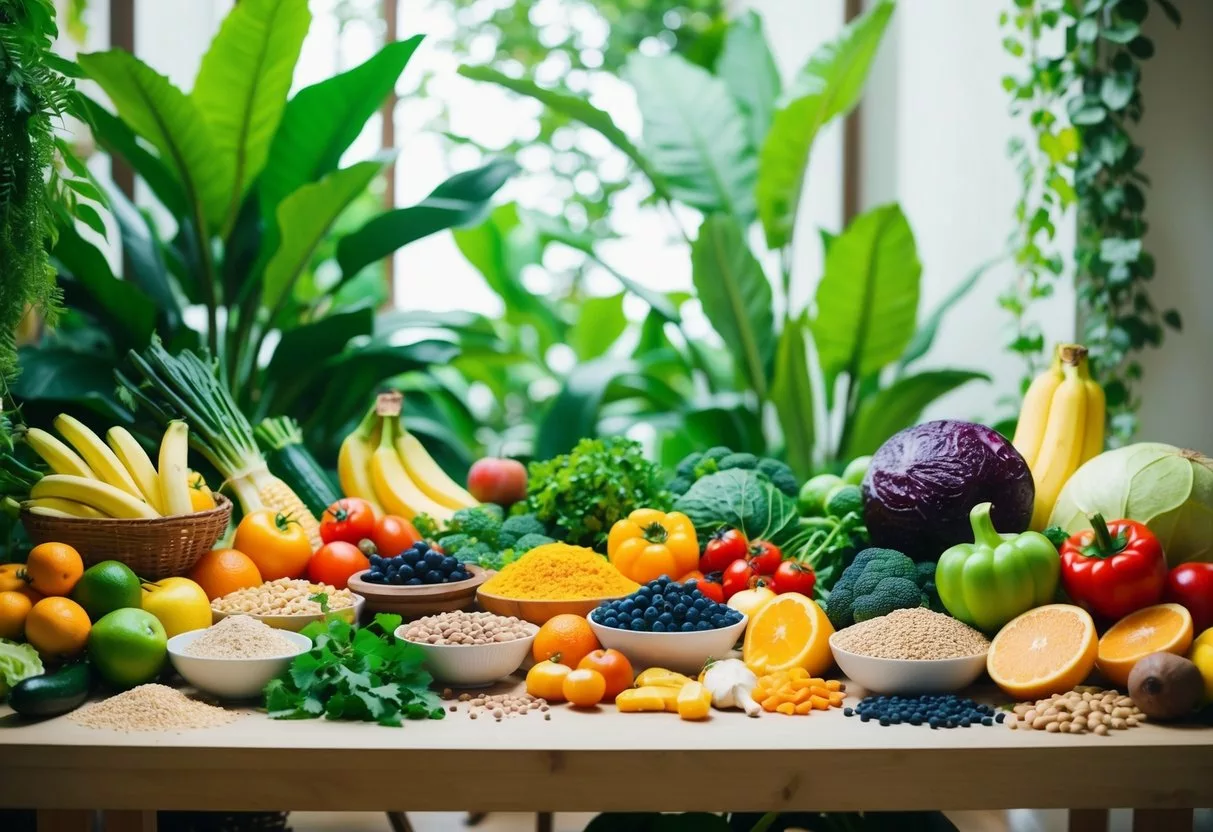
Plant-centered diets offer a wide range of essential nutrients for optimal health. These eating patterns focus on whole foods from plant sources, providing a rich array of vitamins, minerals, and beneficial compounds.
Macronutrients in Plant-Based Foods
Plant-based foods contain all the necessary macronutrients. Carbohydrates come from whole grains, fruits, and vegetables. Proteins are found in legumes, nuts, and seeds. Beans are excellent sources of protein[1]. Plant-based fats are present in avocados, nuts, and seeds.
A typical macronutrient breakdown for a plant-centered diet might look like this:
- Carbohydrates: 45-65%
- Protein: 10-35%
- Fat: 20-35%
Whole grains like quinoa and brown rice provide complex carbohydrates and some protein. Lentils and chickpeas offer both protein and fiber.
Vitamins and Minerals From Fruits and Vegetables
Fruits and vegetables are packed with essential vitamins and minerals. These include vitamin C, vitamin A, potassium, and folate. Dark leafy greens are rich in iron and calcium.
Some key nutrients and their plant sources:
- Vitamin C: Citrus fruits, berries, bell peppers
- Vitamin A: Sweet potatoes, carrots, spinach
- Potassium: Bananas, potatoes, leafy greens
- Iron: Spinach, lentils, tofu
It’s important to note that vitamin B12 is not naturally found in plant foods[4]. People following strict plant-based diets may need to supplement or consume fortified foods.
Fiber and Its Role in Digestive Health
Plant-based diets are naturally high in fiber. This nutrient is crucial for digestive health and can help prevent chronic diseases. Soluble fiber, found in oats and beans, can lower cholesterol levels. Insoluble fiber, present in whole grains and vegetables, aids in regular bowel movements.
Adults should aim for 25-30 grams of fiber daily. Here are some high-fiber plant foods:
- Lentils: 15 grams per cup
- Raspberries: 8 grams per cup
- Pears: 5.5 grams per medium fruit
- Oatmeal: 4 grams per cup
Fiber also helps maintain a healthy gut microbiome, which is linked to overall health and immunity.
Essential Fatty Acids in Nuts and Seeds
Nuts and seeds are excellent sources of essential fatty acids, particularly omega-3s. These fats are important for brain function, heart health, and reducing inflammation. Walnuts, flaxseeds, and chia seeds are especially rich in omega-3s.
Key nutrients in nuts and seeds:
- Omega-3 fatty acids
- Vitamin E
- Zinc
- Magnesium
A daily serving of nuts (about 1 ounce) can provide numerous health benefits. Chia seeds can be easily added to smoothies or oatmeal for a nutrient boost. Flaxseed oil is another option for increasing omega-3 intake in plant-centered diets.
Health Benefits of Plant-Centered Eating
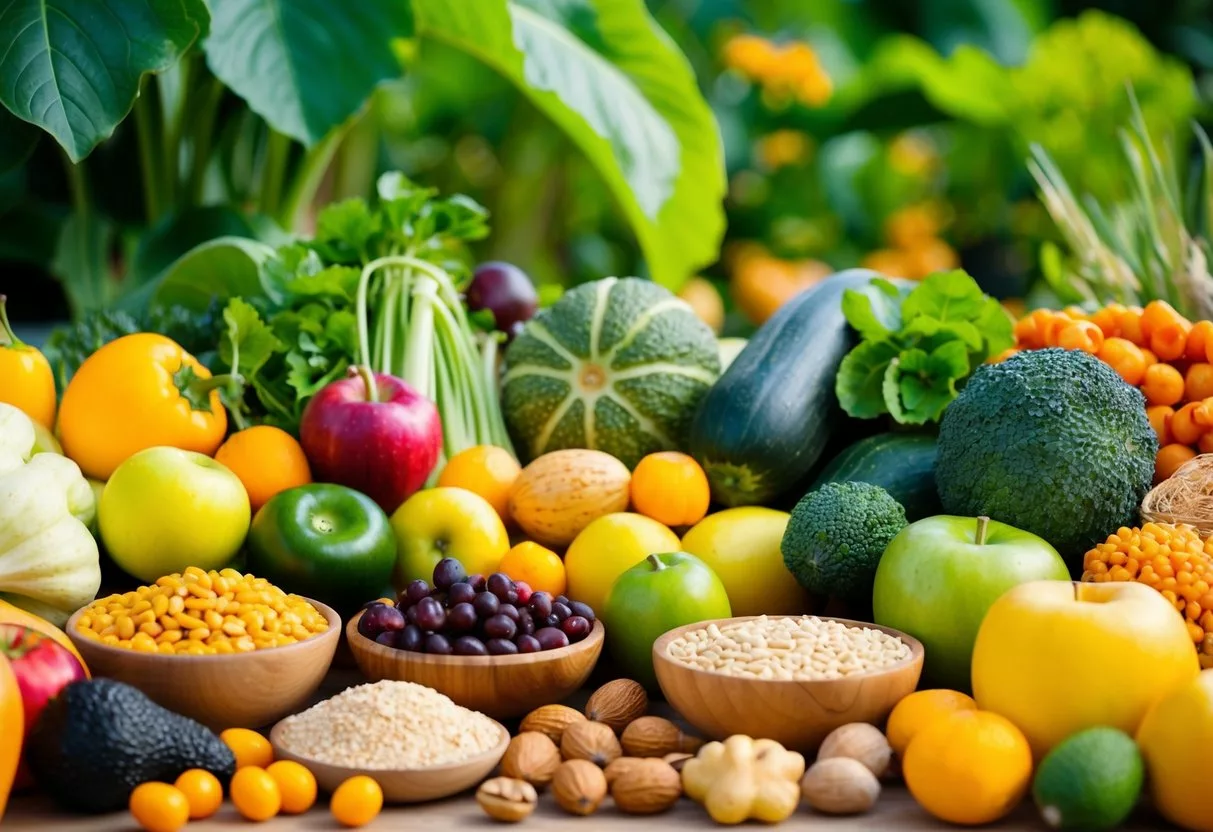
Plant-centered eating offers many health advantages. It can help prevent diseases, manage weight, and improve heart health.
Prevention and Management of Chronic Diseases
A plant-centered diet can lower the risk of chronic illnesses. Studies show it may help prevent and manage type 2 diabetes[5]. This is due to improved insulin sensitivity and better blood sugar control.
Plant-based diets are also linked to reduced cancer risk. The high fiber content and antioxidants in fruits and vegetables play a key role in this protective effect.
For those with existing conditions, adopting a plant-centered approach can aid in disease management. It may help control symptoms and slow disease progression in some cases.
Weight Management and Body Weight Control
Plant-centered eating supports healthy weight maintenance. Plant foods are often lower in calories but high in nutrients and fiber. This combination helps people feel full and satisfied with fewer calories.
Fiber-rich foods like vegetables, fruits, and whole grains can aid digestion and promote feelings of fullness. This may lead to reduced calorie intake and better weight control over time.
Studies have shown that people who follow plant-based diets tend to have lower body mass indexes (BMIs) compared to those who eat more animal products.
Heart Health and Reduced Risk of Cardiovascular Disease
A diet rich in plant foods can significantly benefit heart health. It may lower blood pressure, reduce cholesterol levels, and decrease the risk of heart disease.
Plant-based diets are associated with a lower risk of death from cardiovascular diseases[6]. This is partly due to the low saturated fat content in plant foods.
Plant-centered eating can also reduce inflammation in the body. Chronic inflammation is linked to heart disease and other health problems. The antioxidants found in fruits and vegetables help combat this inflammation.
Comparison with Other Dietary Patterns
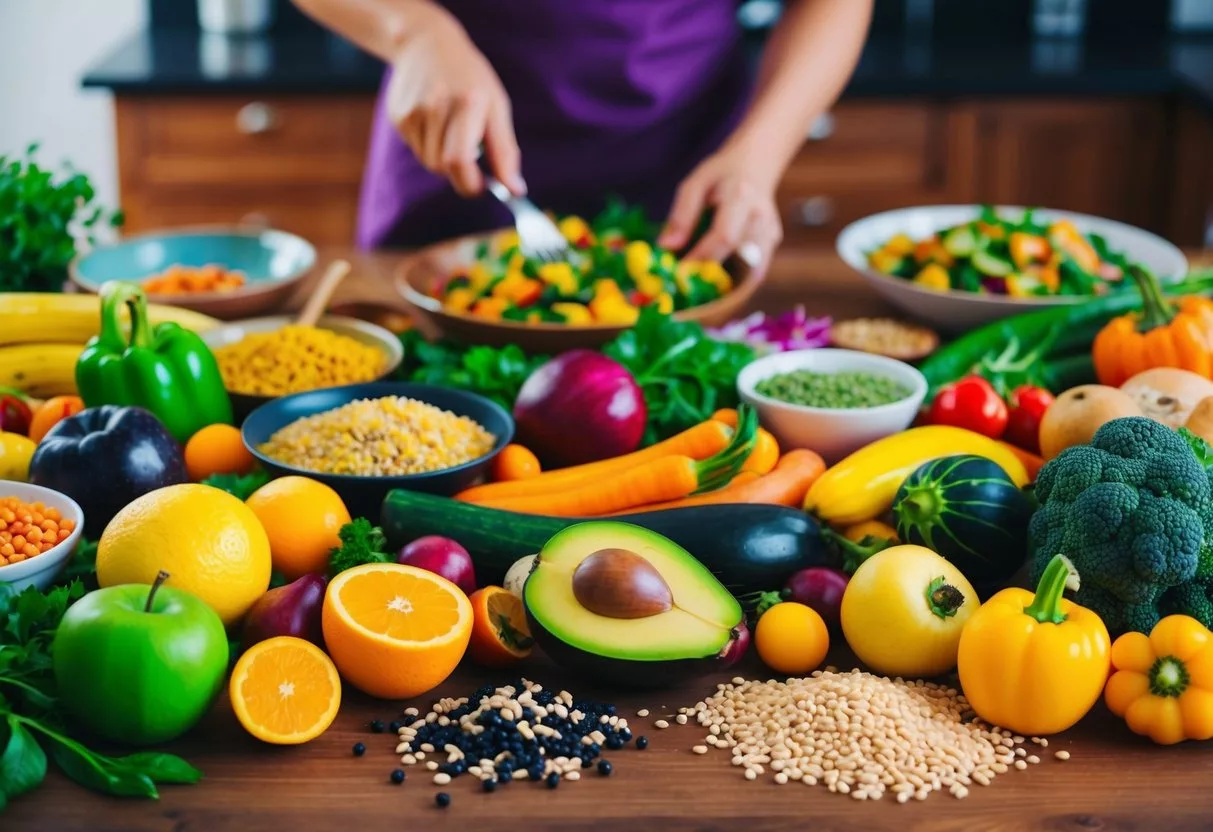
Whole food plant centered eating shares similarities and differences with various dietary patterns. It emphasizes unprocessed plant foods while limiting or excluding animal products and processed items. This approach offers unique health benefits compared to other eating styles.
Plant-Based Eating vs. Vegan Diet
Plant-based diets[7] and vegan diets both avoid animal products. The key difference is that plant-based eating focuses on whole, unprocessed foods.
Vegan diets may include processed items like vegan cookies or fake meats. Plant-based diets exclude these.
Plant-based eating allows more flexibility. Some followers eat small amounts of animal products. Vegans avoid all animal-derived foods.
Both diets can be healthy if planned well. Plant-based eating may have an edge due to its emphasis on whole foods.
How Whole-Food-Based Diets Contrast with Western Diets
Whole-food plant centered diets differ greatly from typical Western eating patterns. Western diets often include:
- High amounts of processed foods
- Large portions of meat and dairy
- Refined grains and added sugars
- Limited vegetables and fruits
In contrast, whole food plant-based diets[8] focus on:
- Unprocessed plant foods
- Abundant fruits and vegetables
- Whole grains, nuts, and seeds
- Little to no animal products or processed items
This approach may help reduce the risk of chronic diseases common in Western populations. It provides more fiber, vitamins, and minerals while limiting unhealthy fats and additives.
Similarities with Mediterranean and DASH Diets
Whole food plant centered eating shares key features with Mediterranean and DASH diets. All three emphasize:
- Plenty of fruits and vegetables
- Whole grains as staple foods
- Limited processed foods and added sugars
The Mediterranean diet includes some fish and dairy. DASH allows small amounts of lean meats. Plant-centered eating is more restrictive with animal products.
All three diets link to lower rates of heart disease and diabetes[7]. They provide ample nutrients and fiber while limiting unhealthy fats and sodium.
These approaches focus on overall dietary patterns rather than specific foods. This flexibility makes them easier to follow long-term.
Incorporating Plant Proteins into Your Diet
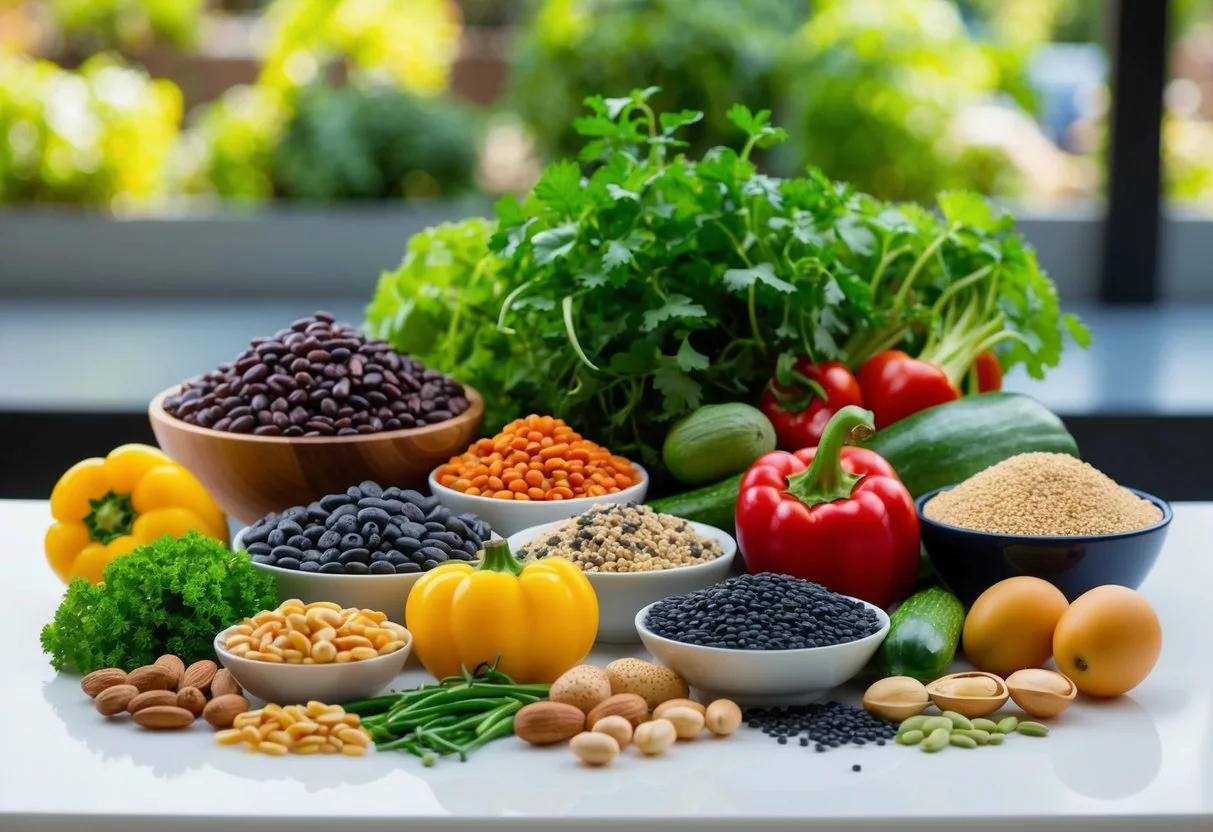
Plant proteins offer many health benefits and can easily be added to meals. They provide essential amino acids and often come with extra fiber and nutrients.
Sources of Plant-Based Proteins
Many tasty foods contain plant proteins. Tofu and tempeh[9] are versatile soy products that soak up flavors well. Quinoa is a protein-rich grain that cooks quickly. Beans like chickpeas and lentils add protein and fiber to dishes.
Edamame makes a great snack or salad topper. Hummus works as a dip or spread. Nut butters offer protein in a creamy form. Plant-based milks often have added protein too.
Here’s a quick guide to protein content in common plant foods (per 1/2 cup cooked):
- Lentils: 9g
- Chickpeas: 7g
- Tofu: 10g
- Quinoa: 4g
- Edamame: 8g
Understanding Protein Requirements
Most adults need about 0.8 grams of protein per kilogram of body weight daily. Athletes may need more. Plant proteins can meet these needs when eaten in the right amounts.
A mix of different plant proteins helps ensure all essential amino acids are consumed. Combining legumes with grains or nuts creates complete proteins. For example, rice and beans or peanut butter on whole wheat bread.
Eating a variety of plant proteins[10] throughout the day helps meet protein needs. This could mean oatmeal with nuts for breakfast, a lentil soup for lunch, and a tofu stir-fry for dinner.
Strategic Meal Planning and Preparation
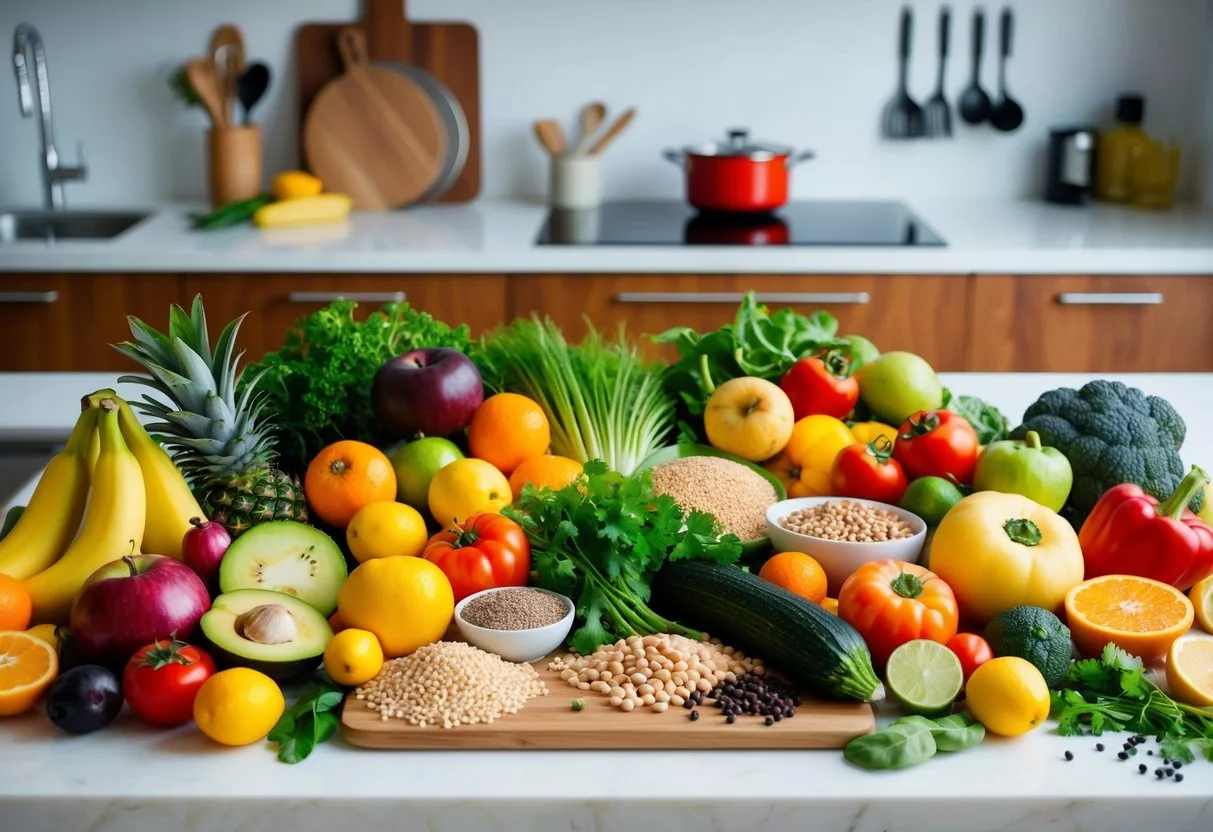
Planning meals in advance and preparing ingredients ahead of time makes it easier to stick to a whole food plant centered diet. This approach saves time, reduces stress, and ensures nutritious meals are always available.
Creating Balanced and Nutritious Meals
A balanced plant-based meal includes a mix of carbohydrates, proteins, and healthy fats. Whole grains like brown rice[11] provide complex carbs and fiber. Legumes such as black beans offer protein and additional fiber.
Starchy vegetables like potatoes, sweet potatoes, and corn contribute carbohydrates and various vitamins. Include colorful vegetables for a range of nutrients.
For healthy fats, add small portions of avocados or walnuts. These foods also provide additional calories for those needing higher energy intake.
A sample meal might include:
- 1/2 cup brown rice
- 1/2 cup black beans
- 1 small baked sweet potato
- 1 cup mixed vegetables
- 1/4 avocado
This combination provides a good balance of nutrients and about 400-500 calories.
Convenient and Healthy Snacking Options
Healthy snacks help maintain energy levels between meals. Prepare snacks in advance for easy access. Cut vegetables like carrots and celery into sticks for quick grab-and-go options.
Fresh fruits make excellent snacks. Apples, bananas, and berries are portable and nutritious. For a more filling snack, pair fruit with a small handful of walnuts.
Homemade hummus serves as a nutritious dip for vegetables or whole grain crackers. It’s easy to prepare in batches and store in the refrigerator.
Baked sweet potato wedges offer a satisfying alternative to french fries. They’re simple to make and can be seasoned with herbs for extra flavor.
Navigating Challenges and Common Concerns
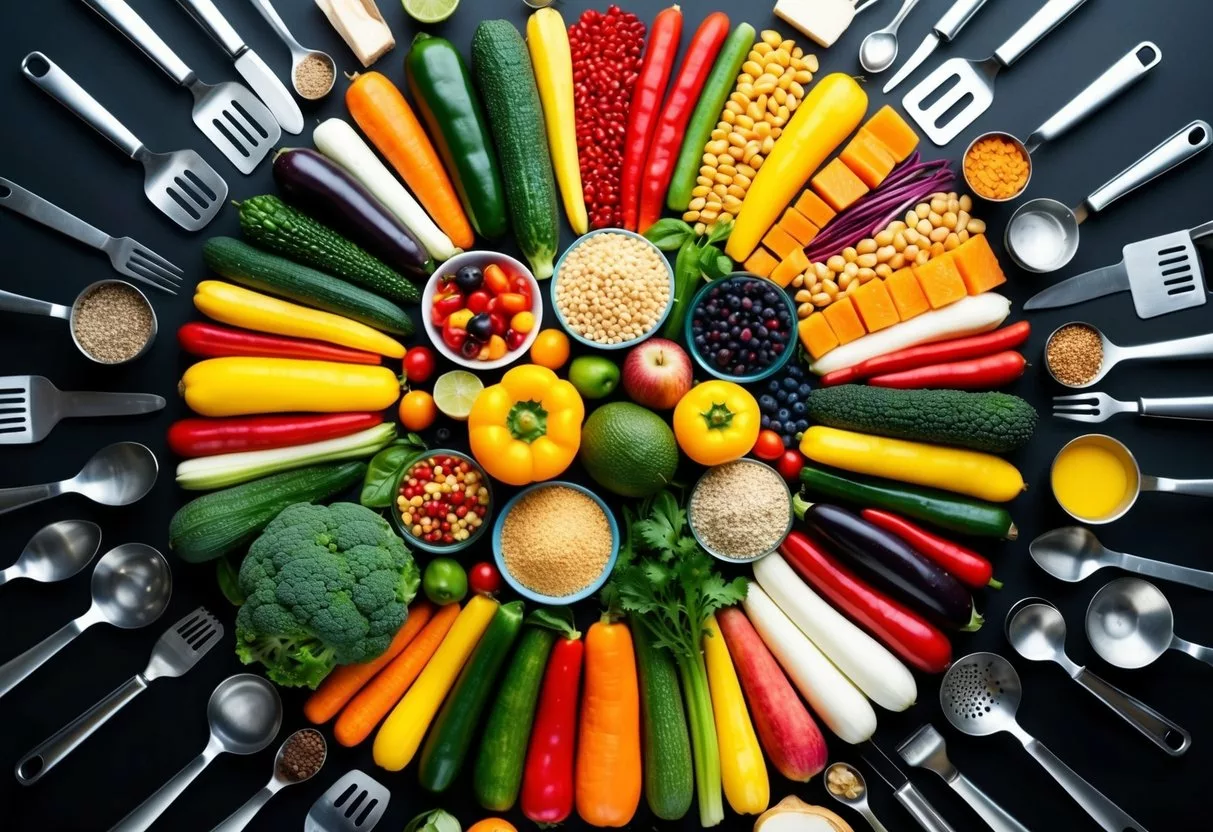
Switching to a whole food plant-centered diet can bring up some hurdles. Let’s look at key issues people often face and how to overcome them.
Ensuring Adequate Iron and B12 Intake
Iron and vitamin B12 are crucial nutrients that need attention in plant-based diets. Iron from plant sources is less easily absorbed than from animal products. To boost iron intake, eat iron-rich plant foods[12] like leafy greens, beans, and fortified cereals.
Pair these with vitamin C-rich foods to enhance absorption. For example, add lemon juice to spinach salads or bell peppers to bean dishes.
Vitamin B12 is mostly found in animal products. Plant-based eaters should consider B12-fortified foods or supplements. Nutritional yeast, fortified plant milks, and some breakfast cereals can be good B12 sources.
Regular blood tests can help monitor iron and B12 levels. Consult a dietitian for personalized advice on meeting nutritional needs.
Overcoming Social and Dining Out Barriers
Social situations and eating out can be tricky for those on a plant-centered diet. Planning ahead is key. Before going to restaurants, check menus online for plant-based options.
Many eateries now offer veggie meals. Don’t be shy about asking for modifications to dishes. Most chefs are happy to accommodate dietary needs.
For social events, offer to bring a plant-based dish to share. This ensures you have something to eat and introduces others to tasty plant-based foods.
Communicate openly with friends and family about your dietary choices. Educate them on the benefits of plant-based eating. This can lead to more support and understanding.
Addressing Satiety and Fullness
Some worry that plant-based meals won’t keep them full. But whole plant foods[8] can be very filling due to their high fiber and water content.
Include protein-rich foods like beans, lentils, tofu, and nuts in meals. These help maintain satiety. Whole grains like quinoa and oats also provide lasting energy.
Don’t skimp on healthy fats from avocados, nuts, and seeds. These add calories and help you feel satisfied.
Eat larger portions of low-calorie vegetables to bulk up meals. This adds volume without excess calories.
Stay hydrated. Sometimes thirst can be mistaken for hunger. Drink water throughout the day and with meals.
Impact of Plant-Centered Eating on Environmental Sustainability

Plant-centered eating has a significant effect on environmental sustainability. This dietary pattern focuses on whole plant foods while limiting or excluding animal products.
Plant-based diets are linked to better environmental health[13]. They require less land, water, and energy to produce compared to diets high in animal products.
Greenhouse gas emissions are lower with plant-centered eating. Animal agriculture is a major contributor to climate change, while plant foods generally have a smaller carbon footprint.
Water usage is also reduced. Growing crops for human consumption uses less water than raising livestock. This helps conserve this vital resource.
Plant-centered diets can help preserve biodiversity. They require less land, reducing deforestation and habitat loss for wildlife.
However, not all plant-based foods are equally sustainable. Highly processed plant foods may have a larger environmental impact. Whole, minimally processed plant foods are typically the most environmentally friendly choices.
Local and seasonal plant foods can further reduce environmental impact by decreasing transportation needs and supporting local ecosystems.
By choosing more plant-based meals, individuals can make a positive impact on environmental sustainability through their daily food choices.
Supporting a Plant-Centered Diet with Lifestyle Choices

A plant-centered diet works best when combined with other healthy habits. Regular exercise and good sleep help maximize the benefits of eating more plants.
Exercise and Physical Activity
Physical activity is key for overall health and well-being[14]. It boosts energy and helps with weight control on a plant-based diet.
Aim for at least 150 minutes of moderate exercise per week. This can include:
- Brisk walking
- Cycling
- Swimming
- Yoga
Strength training 2-3 times weekly builds muscle and bone density. This is especially important on a plant-based diet to maintain lean body mass.
Stay active throughout the day too. Take short walks, use stairs, or do quick stretches. These small actions add up and complement a plant-centered eating pattern.
Sleep and Stress Management
Quality sleep and stress control support a healthy plant-based lifestyle. Adults need 7-9 hours of sleep nightly for optimal health.
Good sleep habits include:
- Sticking to a regular bedtime
- Avoiding screens before bed
- Creating a cool, dark sleeping environment
Manage stress through relaxation techniques like deep breathing or meditation. Even 5-10 minutes daily can make a difference.
Regular exercise also reduces stress. A brisk walk or yoga session can calm the mind and body.
Eating whole plant foods rich in nutrients helps the body cope with stress. Foods like leafy greens, berries, and nuts contain stress-fighting compounds.
The Science of Taste and Food Enjoyment on Plant Diets
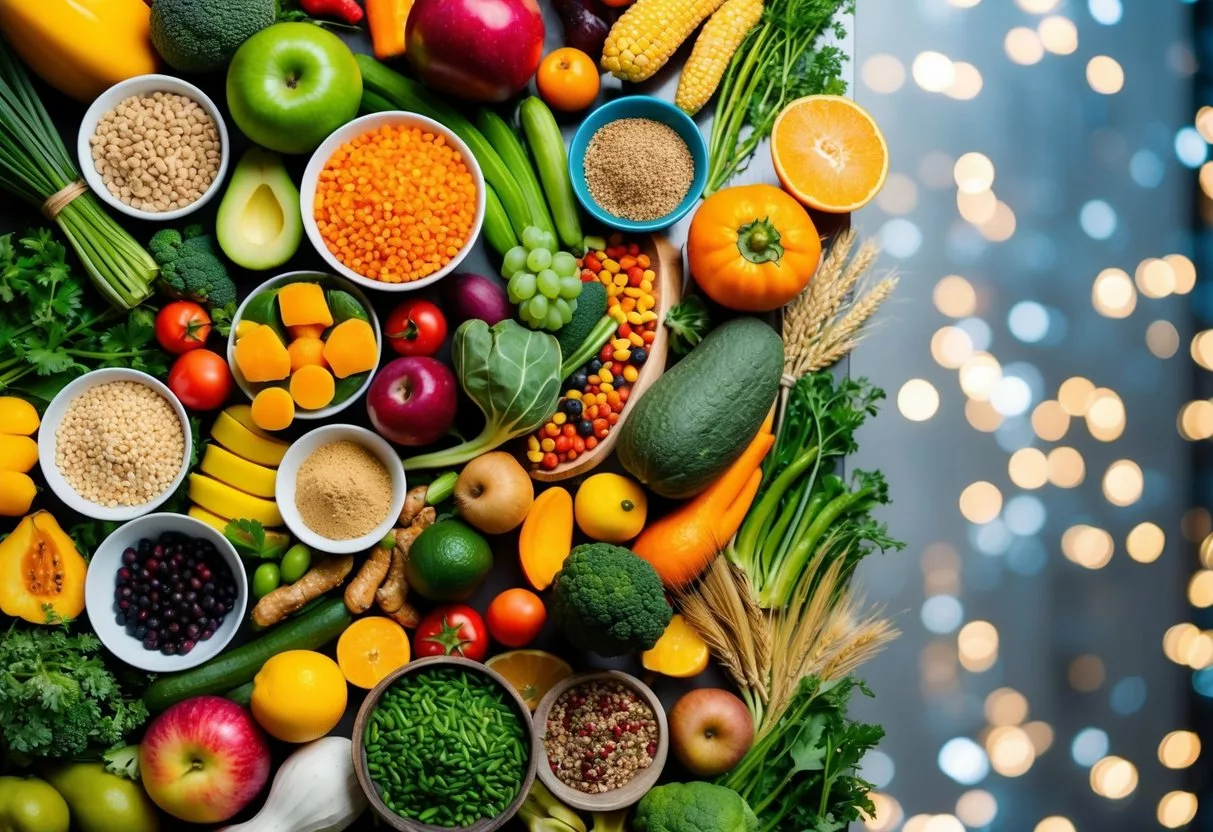
Plant-based diets offer a wide range of flavors and textures. They can be just as satisfying as meat-based meals when prepared with skill and creativity.
Exploring the Diversity of Flavors in Plant Foods
Plant foods contain many different taste compounds[15] that create complex flavor profiles. Fruits provide sweetness, while vegetables offer savory and bitter notes. Herbs and spices add depth and variety.
Some key plant-based flavors include:
- Umami: Found in mushrooms, tomatoes, and nutritional yeast
- Sweet: Naturally present in fruits and some vegetables
- Sour: Common in citrus fruits and fermented foods
- Bitter: Present in leafy greens and some herbs
- Salty: Added through sea vegetables or salt
Combining these flavors creates balanced, tasty meals. For example, pairing sweet potato with spicy chili and creamy avocado hits multiple flavor notes.
Culinary Techniques to Enhance Plant-Based Meals
Cooking methods greatly impact the taste and texture of plant foods. Roasting brings out natural sweetness in vegetables. Grilling adds smoky flavor. Sautéing in vegetable broth creates rich, savory dishes.
Key techniques for tasty plant-based cooking:
- Marinating tofu or tempeh to infuse flavor
- Using nutritional yeast for a cheesy taste
- Blending nuts for creamy sauces
- Smoking vegetables for meaty flavor
- Fermenting foods to develop complex tastes
Seasonings play a crucial role in plant-based cooking. Herbs, spices, and condiments add depth and interest to meals. Combining different seasonings creates unique flavor profiles that can mimic traditional meat-based dishes.
Community and Resources for Plant-Centered Eaters

People who eat plant-centered diets can find support and information through various communities and resources. These help them stay on track and learn more about this way of eating.
One way to connect is through online groups on sites like Facebook and Meetup[16]. There are hundreds of plant-based groups where people share tips and recipes.
In-person meetups let plant-based eaters come together face-to-face. This builds friendships with others who have similar food choices.
Educational materials are key for learning about plant-centered diets. Some helpful resources include:
- Cookbooks
- Documentaries
- Nutrition websites
- Online courses
The Forks Over Knives[16] approach offers many tools for plant-based eating. Their website has recipes, meal planners, and success stories.
PlantPure Communities[17] is another good resource. They provide info on the health and money-saving benefits of plant-based diets.
For science-based nutrition facts, the T. Colin Campbell Center for Nutrition Studies[18] is a trusted source. They offer courses and bring together people interested in plant-based health.
Frequently Asked Questions
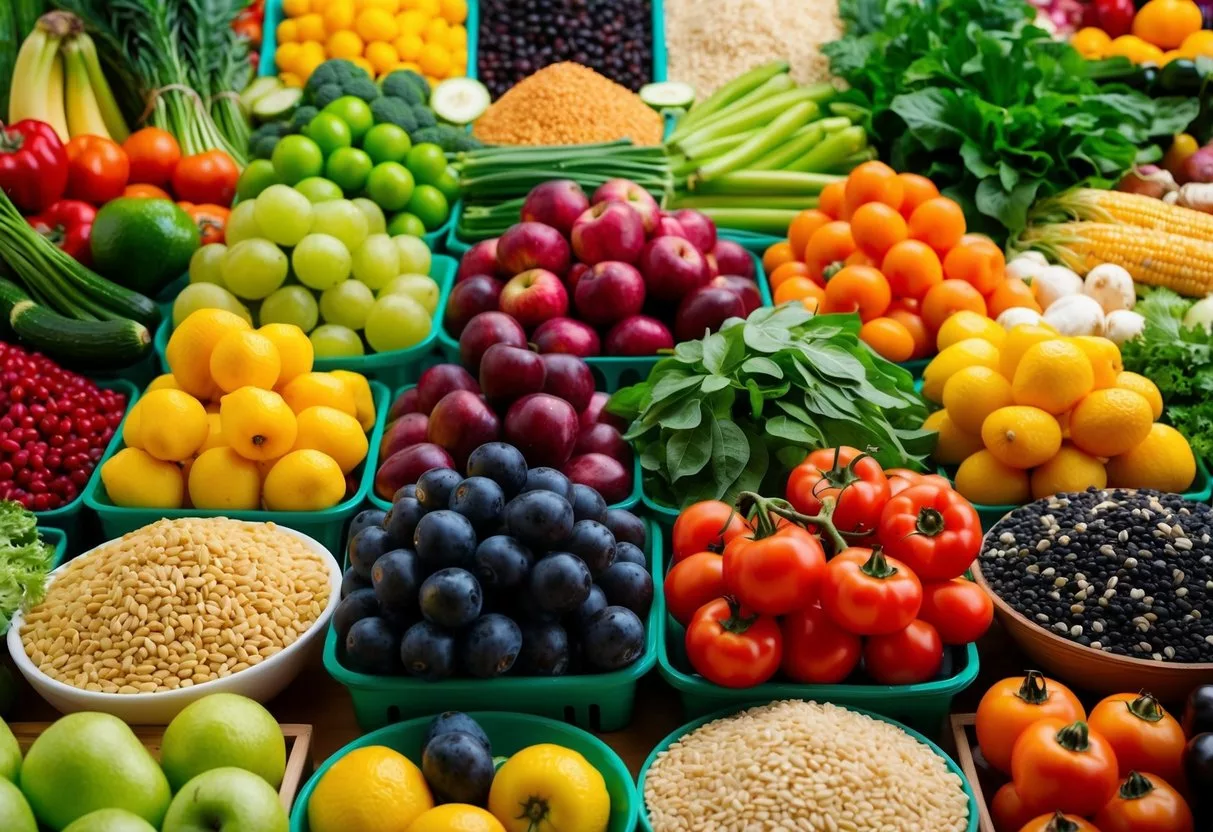
Many people have questions about whole food plant-centered eating. This way of eating focuses on minimally processed plant foods and offers numerous health benefits. Let’s address some common concerns and provide practical insights.
What types of foods are included in a whole food plant-centered eating plan?
A whole food plant-centered diet emphasizes fruits, vegetables, whole grains, legumes, nuts, and seeds[19]. These foods are minimally processed and eaten as close to their natural state as possible.
Leafy greens, colorful vegetables, and fresh fruits form the foundation of this eating style. Whole grains like quinoa, brown rice, and oats are also key components.
Are there any health risks associated with adopting a whole food plant-centered diet?
When properly planned, a whole food plant-centered diet is generally safe and can offer numerous health benefits[8]. It may lower the risk of heart disease, diabetes, and certain cancers.
Some people may need to pay extra attention to certain nutrients like vitamin B12, iron, and omega-3 fatty acids. Consulting a registered dietitian can help ensure nutritional needs are met.
Is it possible to consume animal products while following a whole food plant-centered eating regime?
Yes, it is possible to include small amounts of animal products in a whole food plant-centered diet[20]. This approach is sometimes called a flexitarian diet.
The focus remains on plant foods, but occasional servings of fish, eggs, or dairy may be included. The key is to keep animal products as a small portion of the overall diet.
How can I ensure I am getting all the necessary nutrients when eating a whole food plant-centered diet?
Eating a variety of plant foods helps ensure adequate nutrient intake. Dark leafy greens provide calcium and iron. Legumes and nuts offer protein and zinc.
Fortified plant milks and nutritional yeast can supply vitamin B12[21]. Some people may benefit from supplements, especially for vitamin B12, vitamin D, and omega-3s.
What are some simple whole food plant-centered meals for beginners?
Beginners can start with familiar dishes and modify them. A vegetable stir-fry with tofu and brown rice is an easy option. Lentil soup with whole grain bread is another simple meal.
Oatmeal topped with fresh fruit and nuts makes a nutritious breakfast. A large salad with beans, seeds, and a tahini dressing can serve as a satisfying lunch.
Can I include grains like pasta in a whole food plant-centered eating plan?
Whole grains can be part of a whole food plant-centered diet[22]. Choose pasta made from whole wheat, quinoa, or legumes instead of refined white flour.
Other whole grain options include brown rice, barley, and millet. These provide more fiber and nutrients compared to refined grains.
References
- Whole Food, Plant-Based Diet Guide. https://nutritionstudies.org/whole-food-plant-based-diet-guide/ Accessed October 27, 2025
- Whole Foods Plant Based Diet: Your Complete Guide to Getting Started. https://www.trifectanutrition.com/blog/whole-foods-plant-based-diet-your-complete-guide-to-getting-started Accessed October 27, 2025
- Whole-Foods, Plant-Based Diet: A Detailed Beginner's Guide. https://www.healthline.com/nutrition/plant-based-diet-guide Accessed October 27, 2025
- Plant-Based Diets | Health Topics. https://nutritionfacts.org/topics/plant-based-diets/ Accessed October 27, 2025
- type 2 diabetes. https://www.eatingwell.com/article/291622/the-health-benefits-of-eating-a-plant-based-diet-and-how-to-get-started/ Accessed October 27, 2025
- How does Plant-Forward (Plant-Based) Eating Benefit Your Health?. https://www.heart.org/en/healthy-living/healthy-eating/eat-smart/nutrition-basics/how-does-plant-forward-eating-benefit-your-health Accessed October 27, 2025
- Plant-based diets are best… or are they?. https://www.health.harvard.edu/blog/plant-based-diets-are-best-or-are-they-2019103118122 Accessed October 27, 2025
- What You Should Know About Plant-Based Diets. https://health.clevelandclinic.org/whole-food-plant-based-diet Accessed October 27, 2025
- Tips for eating more plant proteins. https://www.mayoclinichealthsystem.org/hometown-health/speaking-of-health/tips-for-eating-more-plant-proteins Accessed October 27, 2025
- Eating a variety of plant proteins. https://www.eatingwell.com/7-day-high-protein-plant-based-meal-plan-8664843 Accessed October 27, 2025
- Whole grains like brown rice. https://www.eatingwell.com/article/7883300/whole-food-plant-based-diet-plan/ Accessed October 27, 2025
- 8 Steps for a Successful Transition to Plant-Based Eating. https://nutritionstudies.org/8-steps-for-a-successful-transition-to-plant-based-eating/ Accessed October 27, 2025
- Healthy plant-based diets better for the environment than less healthy plant-based diets. https://www.hsph.harvard.edu/news/press-releases/healthy-plant-based-diets-better-for-the-environment-than-less-healthy-plant-based-diets/ Accessed October 27, 2025
- 8 Practical Tips to Get Started with Plant Focused Eating . https://connect.mayoclinic.org/blog/cancer-education-center/newsfeed-post/8-practical-tips-to-get-started-with-plant-focused-eating/ Accessed October 27, 2025
- This store is unavailable. https://wholeharvest.com/blogs/plant-based-lifestyle/whole-food-plant-based-wfpb-diets-a-guide-to-healthy-eating Accessed October 27, 2025
- Tips for Connecting with a Plant-Based Community. https://www.forksoverknives.com/how-tos/how-to-find-your-whole-food-plant-based-community/ Accessed October 27, 2025
- New to WFPB?. https://plantpurecommunities.org/new-to-wfpb/ Accessed October 27, 2025
- Mighty Networks. https://wholecommunities.nutritionstudies.org/ Accessed October 27, 2025
- 11 Common Questions About a Whole-food, Plant-based Diet – Vibrant Life. https://www.vibrantlife.com/11-common-questions-about-a-whole-food-plant-based-diet/ Accessed October 27, 2025
- The FOK Diet Explained. https://www.forksoverknives.com/what-to-eat/ Accessed October 27, 2025
- I’m an RD, and These Are the Most Common Questions I Get Asked About Plant-Based Eating. https://www.wellandgood.com/plant-based-eating-questions/ Accessed October 27, 2025
- Everything You Need to Know About a Whole Food, Plant-Based Diet - Plant-Based Life Foundation. https://pblife.org/lifestyle/everything-you-need-to-know-about-a-whole-food-plant-based-diet/ Accessed October 27, 2025
